What is the Right to Non-Discrimination?
Everyone in Canada has the right to non-discrimination and to live a life free of racism.
This right is protected by the following laws and declarations:
The Universal Declaration of Human Rights (UDHR) is a milestone document in the history of human rights. It was drafted by representatives from all regions of the world. This declaration sets out, for the first time, fundamental human rights to be universally protected. The Declaration was adopted by the United Nations on December 10, 1948, after the Second World War. Although it does not officially have force of law, its fundamental principles have become international standards and most states view UDHR as international law.
The International Convention on the Elimination of all Forms of Racial Discrimination (CERD) is an international human rights document. It establishes that countries must agree to stop racial discrimination and eliminate laws and policies that discriminate against racialized people. Watch this video for a summary of CERD.
The Convention on the Rights of the Child (CRC) is an international human rights agreement. It aims to specifically protect the rights of young people under 18 years old. The CRC was adopted by the United Nations on November 20, 1989. It requires governments from around the world that have ratified the Convention to respect and uphold children’s rights. It is the most widely ratified international human rights treaty in history.
The United Nations Declaration on the Rights of Indigenous Peoples (UNDRIP) is an international human rights declaration. It states that Indigenous Peoples have the same rights as others and should not suffer from discrimination, individually or as a people. The Declaration protects collective rights that may not be addressed in other human rights charters that emphasize individual rights. For more information on UNDRIP watch this video.
The Canadian Charter of Rights and Freedoms sets out rights and freedoms in Canada. It is part of the Canadian Constitution, which is a set of laws containing the basic rules about how Canada operates. The Charter came into force on April 17, 1982. Every person in Canada has the rights and freedoms contained in the Charter. It protects, for example, equality rights, freedom of expression, language rights, and existing Indigenous and treaty rights.
The Canadian Human Rights Act was passed in 1977 and protects people in Canada from discrimination when they work for or receive services from the federal government. This includes First Nations governments or private companies that are regulated by the federal government (for example, banks, telecommunications companies). Under the Act, people are protected from harassment and discrimination on the following grounds: race, national or ethnic origin, colour, religion, age, sex, sexual orientation, gender identity or expression, marital status, family status, genetic characteristics, disability, and criminal conviction.
The B.C. Human Rights Code is a law to protect and promote human rights so that everyone in B.C. can live equally and free from discrimination and harassment.
The B.C. Human Rights Code protects against discrimination based on Indigenous identity, race, colour, ancestry, place of origin, political belief, religion, marital status, family status, physical or mental disability, sex, sexual orientation, gender identity or expression, age, source of income, or criminal conviction.
Under the Human Rights Code, each person in B.C. is responsible for upholding each other’s human rights and not discriminating against others.
The B.C. Declaration on the Rights of Indigenous Peoples (Declaration Act) was passed by the Legislative Assembly of BC in November, 2019. The Declaration Act establishes UNDRIP as the province’s framework for working towards and achieving reconciliation with Indigenous Peoples. The Declaration Act aims to create a path forward that respects the human rights of Indigenous Peoples. B.C. is the first province in Canada to create such a law.
The Declaration on the Rights of Indigenous Peoples Act is a British Columbia law that creates a path forward towards respecting the human rights of Indigenous Peoples while introducing better transparency and predictability.
This law is an important step towards true and lasting reconciliation, which will uphold Indigenous rights and create stronger communities and families.
On March 30, 2022, government released the Declaration Act Action Plan which identifies goals, outcomes, and priority actions to make tangible progress toward the long-term vision for implementing the Declaration Act in British Columbia.
The Ministry of Education and Child Care remains committed to implementing the 13 education and child care specific actions in the Action Plan. This includes strategies to address Indigenous-specific racism in the education sector, and to further improve educational outcomes for Indigenous students.
The ministry is committed to working with Indigenous Rightsholders, Peoples, and education partners to address each action so we can collectively support Indigenous students in the years ahead.
The Province of British Columbia is required to take a distinctions-based approach in all relations with First Nations, Métis, and Inuit.
This requirement has a legal foundation in:
- The Constitution Act, 1982
- The United Nations Declaration on the Rights of Indigenous Peoples (UN Declaration)
- The Declaration on the Rights of Indigenous Peoples Act (Declaration Act)
- Treaties
- Respective and distinct laws, legal systems, and systems of governance of First Nations, Métis, and Inuit
Within the education system, legislation and policies exist to uphold the right to non-discrimination. These include:
- B.C. Safe Schools Act
- School district and independent school policies and procedures
- Professional Standards for B.C. Educators
- British Columbia Tripartite Education Agreement
- Union policies
